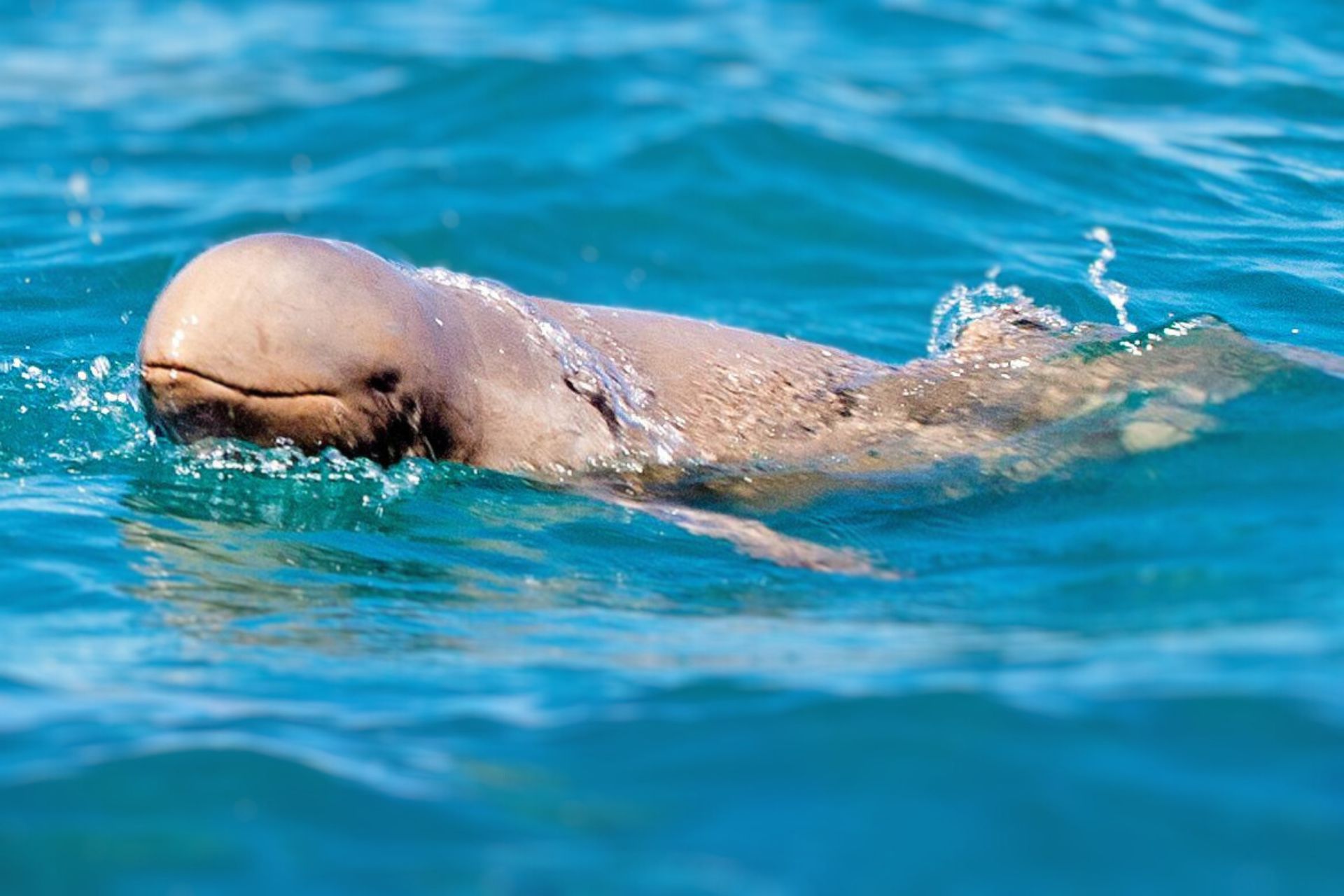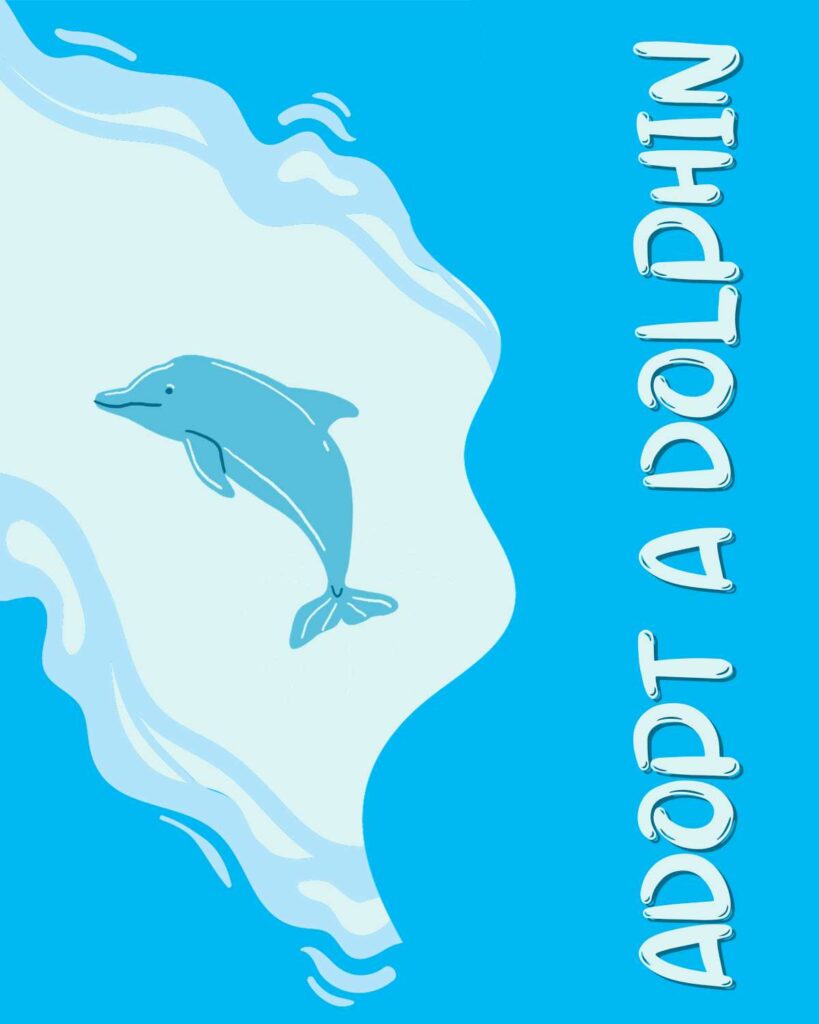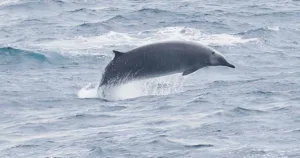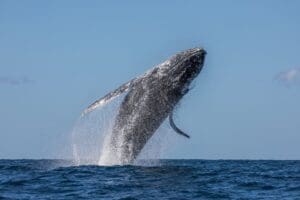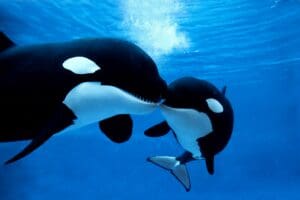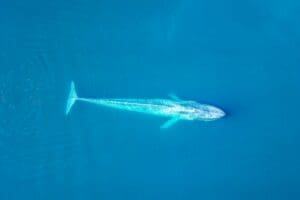The Biology of the Australian Snubfin Dolphin
Embark on a fascinating journey into the world of the Australian Snubfin Dolphin, one of the ocean’s most intriguing and lesser-known inhabitants. Hidden in the coastal waters of northern Australia, this unique dolphin species, with its distinctive snubbed nose and playful demeanor, remains shrouded in mystery.
From their elusive nature to their social interactions and conservation challenges, we’ll uncover the secrets of these charming cetaceans.
Facts First
New to Science: The Australian Snubfin Dolphin was only recognized as a separate species in 2005, making it one of the newest members of the dolphin family to be identified by scientists.
Unique Appearance: Snubfin Dolphins have a distinctive appearance with a rounded, snub-shaped dorsal fin (unlike the typically pointed fin of other dolphins) and a round, bulbous forehead.
Coloration: They have a unique color pattern, with a three-tone coloration – dark grey on the back, lighter grey on the sides, and a creamy white belly.
Rare Species: The Snubfin Dolphin is one of Australia’s rarest dolphins and is found only in the coastal waters of northern Australia, making it endemic to the region.
Shy Nature: Unlike many other dolphin species that are known for approaching boats and humans, Snubfin Dolphins are generally shy and elusive.
Vocalizations: They have a wide range of vocalizations, including complex calls that are thought to be used for communication and social interaction.
Feeding Habits: Snubfin Dolphins have a diverse diet and use a unique hunting strategy where they spit water to round up fish, making them easier to catch. This behavior is not commonly observed in other dolphin species.
Small Groups: They are usually seen in small groups of two to five individuals, but occasionally they gather in larger groups.
Slow Swimmers: Snubfin Dolphins are relatively slow swimmers compared to other dolphins, often seen leisurely moving close to the water’s surface.
Threatened Species: They face several threats, including habitat loss, entanglement in fishing nets, and water pollution. Their limited distribution and low population numbers add to their vulnerability.
Conservation Status: The Australian Snubfin Dolphin is currently listed as a vulnerable species, highlighting the need for conservation efforts.
Social Structure: They exhibit complex social structures and have been observed displaying a variety of social behaviors, including playing, touching, and synchronized swimming.
No Beak: One of the distinctive features of the Snubfin Dolphin is the lack of a prominent beak, which is a common characteristic in many other dolphin species.
Research Focus: Due to their recent classification as a distinct species and their elusive nature, they are a focus of marine research, which aims to understand more about their behavior, population dynamics, and ecology.
Taxonomy and Classification
Latin name and taxonomy
You might be curious about the Latin name and classification of the Australian snubfin dolphin. The scientific community refers to it as Orcaella heinsohni. As a member of the Delphinidae family, this species shares common ancestry with the other members yet distinguishes itself through various unique traits. Orcaella is a genus closely related to the Irrawaddy dolphin, consisting of small to medium-sized dolphins.
Evolutionary history
Diving into the evolutionary history, the Australian snubfin dolphin hails from a lineage that has been swimming in our oceans for millions of years. Over lengthy periods, this species has adapted to its niche oceanic environment through a series of evolutionary developments.
Relation to other dolphin species
As your curiosity grows, you’ll learn that this dolphin has close ties to other species within its family, most notably the Irrawaddy dolphin (Orcaella brevirostris). They share the genus Orcaella, indicating a relatively recent common ancestor when you consider the broad dolphin family tree.
Distinct characteristics defining the species
What sets the Australian snubfin dolphin apart from its relatives is a combination of its unique physical features and behavior. These distinct characteristics, which you’ll explore in the next sections, are integral to the species’ classification and our understanding of its place in the web of aquatic life.
Physical Description
Size and weight
When you see an Australian snubfin dolphin, its size and weight are immediately noticeable distinguishing factors. Adults typically grow to about 2 to 2.7 meters in length, making them smaller than many other dolphin species, and they weigh around 130 to 170 kilograms. Their size allows for agility and playfulness in their habitat.
Coloration and markings
The coloration and markings of these dolphins are striking. They possess a three-tone color scheme with a dark gray back, a lighter gray midsection, and a white or pinkish belly. You’ll find such coloration is not just for aesthetics—it’s practical, offering camouflage in aquatic environments.
Distinguishing features
Among the distinguishing features you can’t miss is the snubfin dolphin’s rounded, almost snubby, dorsal fin – a trait that undoubtedly influenced the species’ common name. Additionally, their faces have a rounded forehead, known as a melon, and a lack of a beak, which gives them an almost pug-nosed appearance.
Sexual dimorphism
Sexual dimorphism in these animals is relatively subtle, but usually, you’d observe that males are slightly larger and heavier than females. Aside from size differences, both sexes are similar in appearance, making it a challenge to differentiate them from a distance.
Habitat and Distribution
Geographic range
You will find the Australian snubfin dolphin inhabiting the waters off northern Australia’s coastline. They are endemic to this region, meaning they are not naturally found anywhere else in the world.
Types of habitats
As you explore their habitats, you’ll notice they prefer shallow, coastal waters and are often seen in riverine and estuarine areas. These environments provide a rich source of food and protection from larger predators.
Adaptations to habitat
Their distinctive body shape and size enable them to navigate and forage successfully in these shallow environments. Their rounded foreheads may also play a role in their echolocation ability, helping them locate prey within murky waters.
Current threats to habitat
Present threats to their habitat include coastal development, pollution, and climate change, which can all contribute to the degradation of the ecosystems they depend on. Such changes threaten the vital resources necessary for their survival.
Diet and Feeding Behavior
Typical diet
The diet of the Australian snubfin dolphin consists mainly of fish, cephalopods, and crustaceans. They have diverse dietary preferences, which aid in their survival in the dynamic coastal environments they inhabit.
Foraging strategies
To catch a meal, they employ several foraging strategies. They can work alone or in groups to herd schools of fish, using the shallow water to their advantage. Their echolocation capabilities allow them to detect prey in turbid conditions common in estuaries and mangroves.
Role in the ecosystem
Your understanding of their role in the ecosystem highlights their importance as predators. They help maintain the balance within the food chain by regulating the population of fish and other marine organisms they consume.
Impact of environmental changes on diet
You should know that environmental changes can significantly impact the snubfin dolphin’s diet. Alterations in water temperature, salinity, and prey availability due to climate change can lead to changes in their feeding habits and distribution.
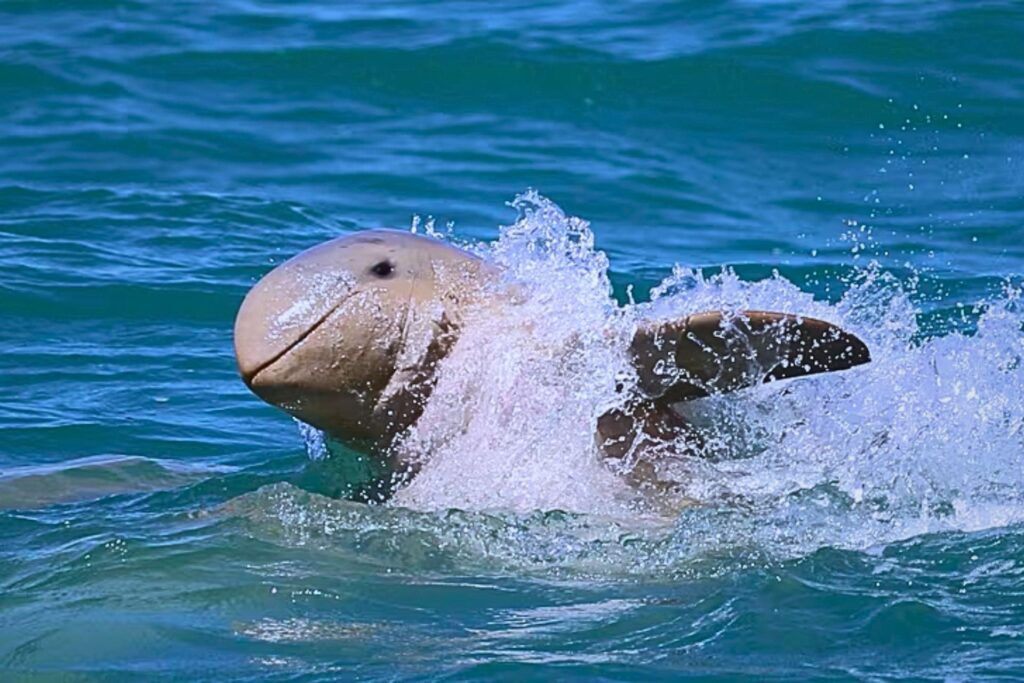

Social Structure and Behavior
Group dynamics
Their group dynamics are fascinating to observe. Australian snubfin dolphins form small groups, usually consisting of 2 to 15 individuals. Group membership may change over time, reflecting a fission-fusion dynamic similar to other dolphin species.
Interaction with other dolphin species
In the company of other dolphin species, the snubfin dolphins generally exhibit a peaceful coexistence. Though there may be competition for food resources, overt aggression is rare.
Social communication
Social communication among Australian snubfin dolphins is a complex tapestry of vocalizations and body language. They use a variety of clicks, whistles, and pulsed sounds to communicate with one another, strengthening social bonds and coordinating activities.
Reproductive behavior
Regarding reproductive behavior, courtship is a playful and tactile affair. Males may compete for the attention of females, but the dynamics of these interactions are still not fully understood by scientists.
Reproduction and Lifecycle
Mating season and practices
Your calendar notes that the mating season for the snubfin dolphin typically occurs during the Australian winter months. While not entirely documented, their mating practices are believed to involve intricate courtship behaviors.
Gestation period
The gestation period for a female snubfin dolphin is roughly 11 months, after which she gives birth to a single calf. This period ensures the developing offspring can grow sufficiently before facing the challenges of the ocean.
Calf rearing
Calf rearing is a maternal responsibility. Mothers are often seen nurturing and teaching their young for several years until the calves are independent enough to forage for themselves and join other groups.
Lifespan and stages of life
These dolphins can live up to 30 years, moving through various life stages from calving to maturation and, eventually, senescence. Each stage has its own set of behaviors and roles within the population.
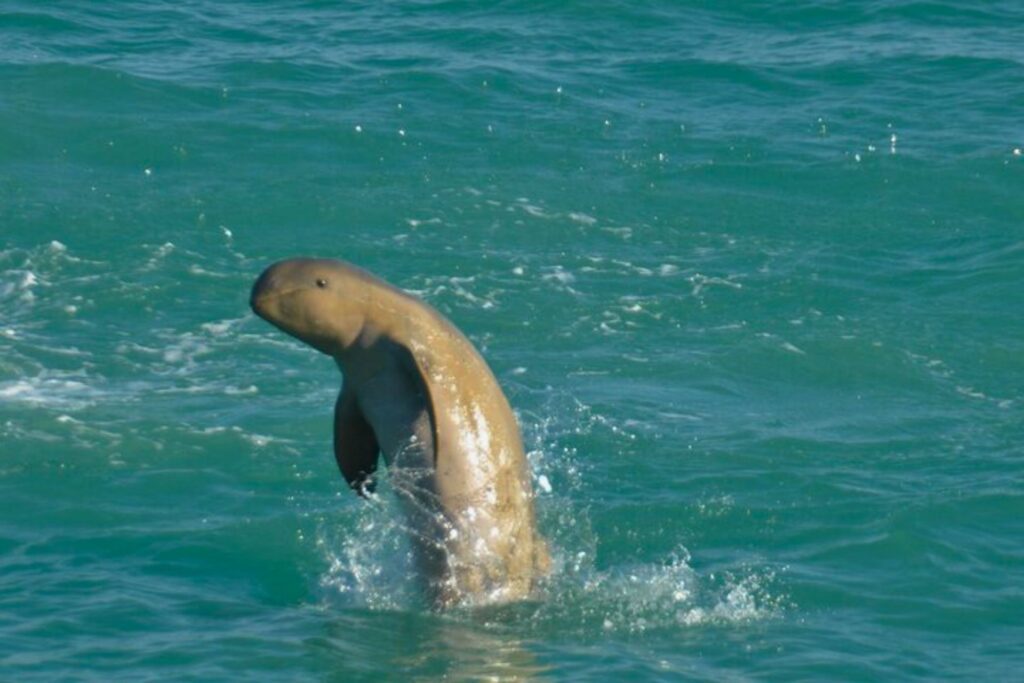

Conservation Status
Current population trends
Current population trends for the Australian snubfin dolphin show concern for declining numbers. Due to their limited distribution and habitat, their populations are vulnerable to even minor ecological changes.
Conservation efforts and strategies
Conservation efforts focus on habitat protection, research, and strategies for minimizing human impact. Protocols to limit industrial development in critical areas and gear modifications in fisheries are strategies employed to help conserve the species.
Human impact on species survival
Human activities, including coastal development, pollution, and inadvertent capture in fishing operations, play a significant role in the survival of these dolphins. It’s crucial to manage these impacts to ensure their future.
Role of research and public awareness
Research and public awareness are pivotal in conserving the Australian snubfin dolphin. Increased knowledge of their biology, behavior, and habitat needs informs conservation strategies while raising public awareness fosters support for protective measures.
Interactions with Humans
Fisheries and bycatch issues
One of the pressing issues for snubfin dolphins is bycatch in fisheries. They can become entangled in nets, leading to injury or death. Fisheries management is thus critical to reducing this unintentional harm.
Boating and habitat disturbances
Boating can cause habitat disturbances for these sensitive creatures, from noise pollution to physical risks such as boat strikes. Responsible boating practices are needed to mitigate these risks.
Conservation programs involving local communities
Conservation programs are more effective when they involve local communities. Engaging people who live alongside these dolphins in their protection ensures the development of sustainable strategies that account for human and wildlife needs.
Eco-tourism and its effects
Eco-tourism presents both opportunities and challenges. It can foster economic benefits and promote conservation, but it must be managed carefully to prevent negative impacts on dolphin populations and their habitats.
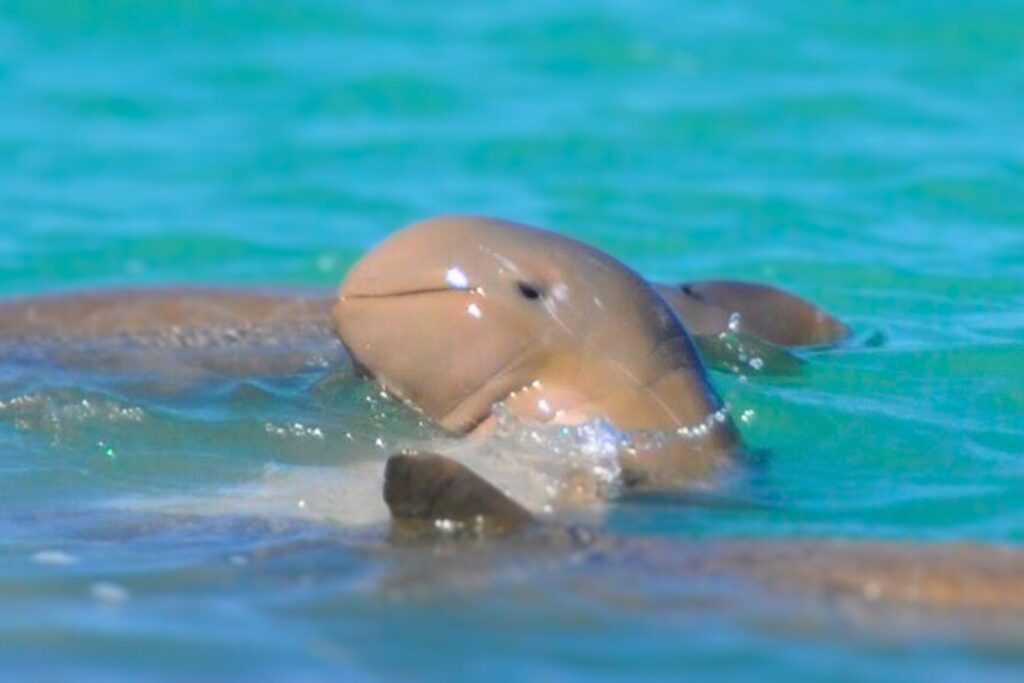

Research and Study
Historical research overview
Historically, research on the Australian snubfin dolphin was limited due to its obscurity and confusion with similar species like the Irrawaddy dolphin. However, as recognition of the species has grown, so has the body of research.
Modern research techniques
Modern techniques like genetic analysis, acoustic monitoring, and photo-identification have improved our understanding of these elusive animals. Such methods help researchers monitor populations, understand their social structures, and assess their health.
Challenges in studying the snubfin dolphin
Challenges in studying these dolphins include their remote habitat, shyness around humans, and occasional difficulty in locating them due to their preference for murky waters.
Major contributions to marine biology
Studies on the Australian snubfin dolphin have made major contributions to marine biology, providing insights into the complexity of marine ecosystems and the importance of conservation.
Adaptations to the Changing Environment
Climate change effects
Climate change poses a considerable threat to the Australian snubfin dolphin. Rising sea levels and changes in sea temperature can alter the habitats and prey availability that these species depend on.
Adaptability to warming waters
Fortunately, their adaptability to warming waters will be key to their survival. How they alter their distribution and behavior in response to temperature changes will be critical in understanding the impact of global warming on marine mammals.
Changes in prey availability
As prey availability shifts due to environmental changes, the Australian snubfin dolphin’s diet may also need to change. Monitoring these shifts will be necessary to predict and mitigate any negative effects on their populations.
Long-term survival prospects
Your concern for their long-term survival prospects hinges on the collective action taken to address climate change and other human impacts. With effective conservation strategies and a commitment to habitat protection, it’s hoped that these charming dolphins will continue to grace Australia’s northern waters for generations to come.
FAQ
Why are Australian Snubfin dolphins endangered?
Australian Snubfin Dolphins are considered vulnerable primarily due to habitat loss, entanglement in fishing nets, pollution, and the impacts of coastal development. Their limited distribution and relatively small population size also contribute to their vulnerability.
What is the lifespan of the Australian Snubfin dolphin?
The exact lifespan of Australian Snubfin Dolphins is not well-documented, but it is estimated that they can live for about 30 years or more, similar to other dolphin species.
What are the threats to snubfin dolphins?
Major threats to Australian Snubfin Dolphins include entanglement in fishing gear (bycatch), habitat degradation due to coastal development, water pollution, and the potential impacts of climate change on their coastal habitats and prey availability.

